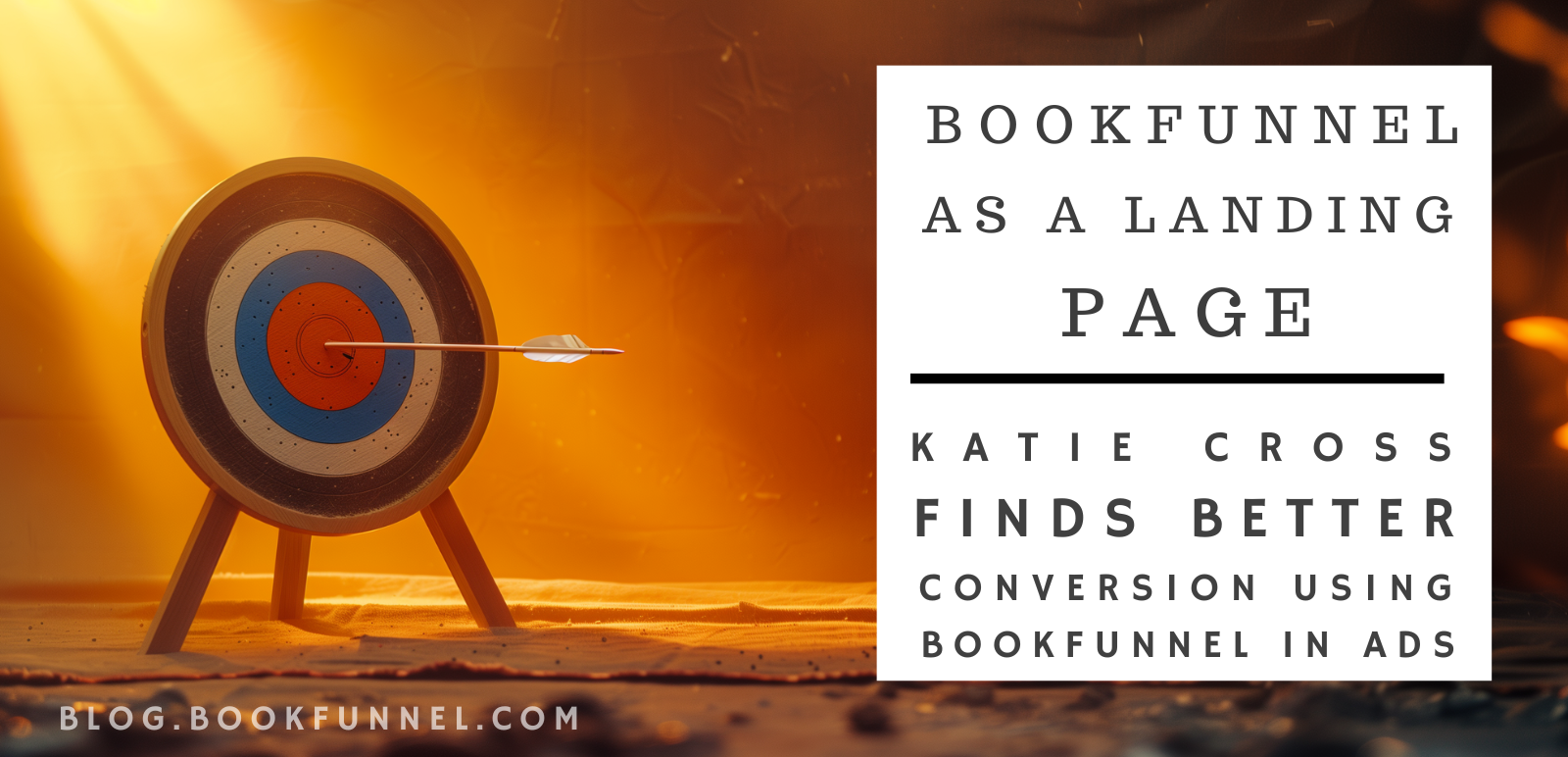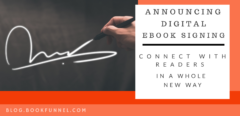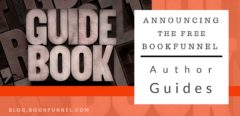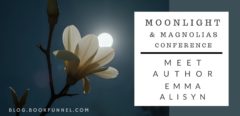BOOKFUNNEL AS A LANDING PAGE
Guest writer: Katie Cross.
Last year, Damon said to me, “Hey, Katie. You wanna do some ad testing together?” and I said, “Hey, Damon. You know I do.”
We decided to test the question of whether or not BookFunnel as a landing page could convert Facebook advertising better than the landing page I used on my website (KCB for KatieCrossBooks from here on out).
Specifically, we wanted to know if having BookFunnel as the link URL would make any difference to potential readers seeing ads in Facebook. Thus, helping not only readers get the books they want, but helping authors, too.
And without the hassle of dealing with landing page builders.
(Spoiler alert: BookFunnel won.)
If you have a strong emphasis in direct sales, just like me, then finding readers who already know and use BookFunnel is a huge advantage. If you don’t have a strong emphasis with direct sales, this information still applies because it’s all about getting books into the reader’s hands.
Here are our results. We’ve tried hard to make them easy to understand for those authors that don’t use Facebook advertising, but also comprehensive enough that those who do use Facebook advertising can appreciate the results.
OVERVIEW
Here are a few of the basic metrics that we used going into this advertising test. It’ll provide a general overview of what we tracked and how we ran it.
- Campaign type: Purchase ads for January and February, and then we switched to Traffic ads in March. (If you’re not familiar with them, purchase ads aim to get people to perform a buying action. In this case, Facebook sent my ads to people who were most likely to purchase from my store based on previous experience with that person.
- Traffic ads are sent to an audience focused on achieving a full view of the landing page where I send them, but may not take any action. They’re clickers and perusers.
- Budget: $20 per day, split into two campaigns at $10 each.
- Ad Set 1: BookFunnel Landing Page ($10)
- Ad Set 2: KatieCrossBooks.com (KCB) Landing Page ($10)
- Duration: 3 months. January, February, and March of 2024.
- Audience: While I used the same audiences across ad sets, the audience changed depending on the results of the ads. For the purchase campaigns, I used various interest based targeting. For the traffic campaign, I used a 3% lookalike. All of our basic demographics were male / female, 18+, in Australia, Canada, New Zealand, the United States, and the United Kingdom.
- Creative. The exact same images, headline, and copy across all ad sets, and within the same audiences, to keep as many variables under control as possible. I tested the tagline, image, and copy to optimize results before choosing the ad sets.
Across all three months, we juggled ad sets 4-5 times for each website. The purchase ads had a far more difficult time (experienced more creative fatigue) and the traffic settled quickly.
I did not link to or share the BookFunnel landing page and the KCB landing page anywhere else. The only traffic that could have found them was from these ads, in order to keep the data as clean as possible.
The test is over, so if you want to see our landing pages, click here for the BookFunnel landing page.
RESULTS
In the end, BookFunnel won the landing page test by a wide margin across several different metrics. You can see the basic results in this screenshot below. Keep reading for an explanation of the terms.
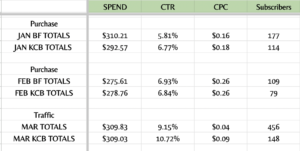
-
- Spend. As you can see, spend stayed consistent throughout the campaigns and ad sets. (The disparities are due to Facebook advertising, which doesn’t always spend the exact amount.)
- CTR. Click Through Rate. This metric quantifies the number of people that click on the ad vs. the number of people that see it. As you can see, BookFunnel and my website had a competitive CTR across ads. This is because I used the same creative.
- CPC. Cost-Per-Click. This is how much Facebook charged us per ad click. On the purchase campaigns (Jan and Feb), you can see that BookFunnel remained competitive with my website. On the Traffic campaign, BookFunnel was less than half the cost.
- Subscribers. This is truly the king metric for this test, and across ALL campaigns, BookFunnel held the throne.
Across the board, but particularly with the traffic ad sets, BookFunnel won out over my website in all the places that mattered most. (Namely, subscribers and cost-per-click.)
SUMMARY
The ad test highlighted a couple of things for me, as an indie author.
- When running traffic ads in particular (though the same was true for purchase campaigns as well), BookFunnel pulled in more subscribers.
- For someone running direct sales like myself, these leads are of higher quality, because their familiarity with BookFunnel will make it easier for me to sell to them later. They’ll already have the audiobook player and e-reader of choice from my website. In other words: it decreases a potential friction point for future sales
- Because BookFunnel allows you to put your pixel into any landing page, this decreases any concerns for me over running traffic to someone else’s website over my own. I can still retarget anyone who clicked on the link and viewed the BookFunnel page later. In the future, when Google disables third-party cookies in Chrome, BookFunnel plans to allow you to use the Pixel API behind the scenes to still take advantage of this.
- I will take any opportunity to decrease my need for building out a landing page that is primed for reader conversion. Not only does this save me time, but can save hundreds of dollars. BookFunnel will even allow you to do a subdomain that is personalized to your pen name but still leverages the BookFunnel.com domain.
In all, I was extremely pleased with the results and plan to use a direct BookFunnel page for my advertising in the future. I mean, they make it so easy.
Kings to you, BookFunnel.
—Katie Cross
PS—If you have any further questions, join us July 17th, 2024 at 2 pm CDT for a Live Q&A where we can dive deeper into metrics, your questions, purchase attribution, or whatever else you want to discuss. Sign up on Calendly.
